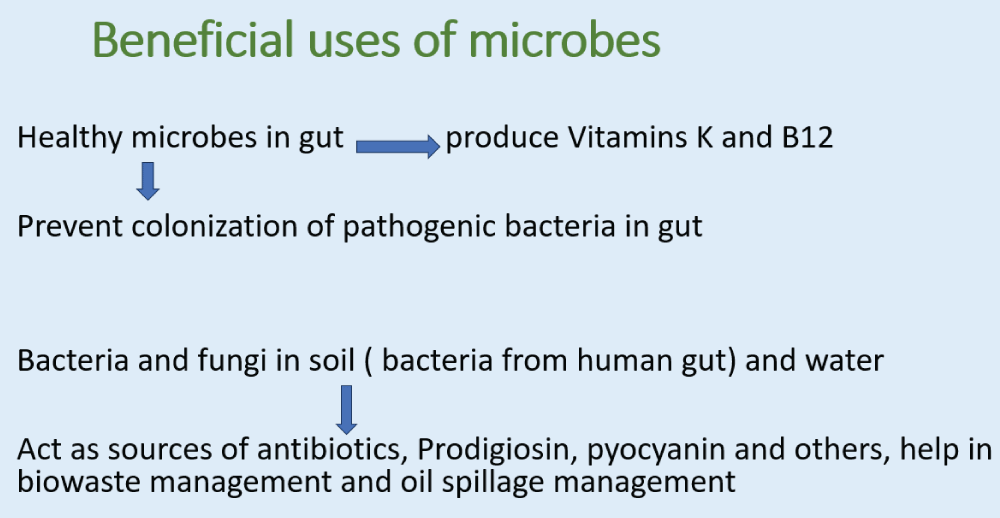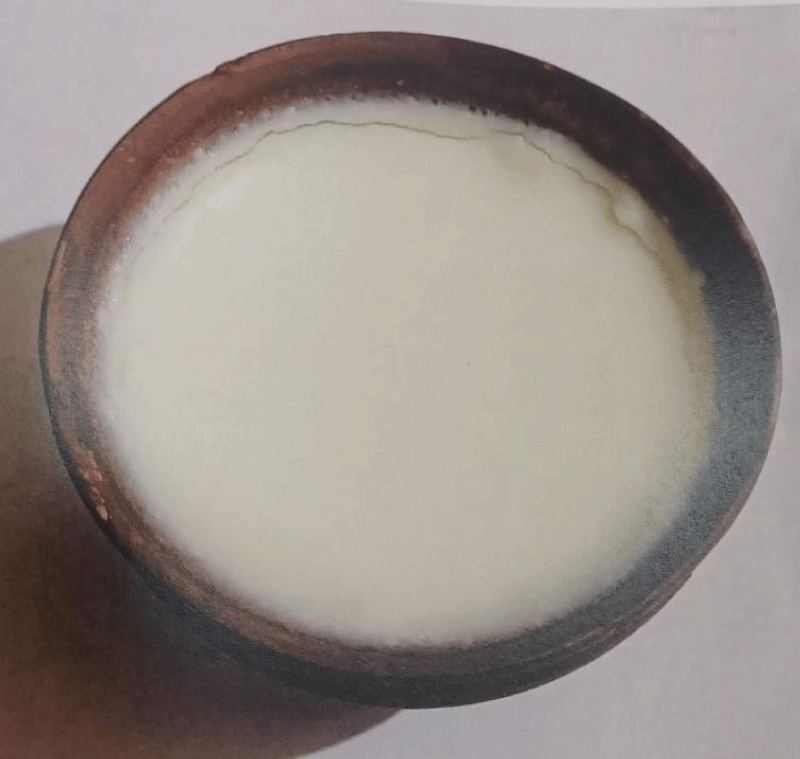
Harnessing Microbes for the Benefit of Man
Microbiology受け取った 11 Jun 2024 受け入れられた 06 Jul 2024 オンラインで公開された 08 Jul 2024
Focusing on Biology, Medicine and Engineering ISSN: 2995-8067 | Quick Google Scholar
Next Full Text
DNA Genetics and UHPLC-Q-TOF-MS Analysis of Phytochemicals for Asparagus racemosus Roots
Previous Full Text
The Influence of Low Pesticide Doses on Fusarium Molds


受け取った 11 Jun 2024 受け入れられた 06 Jul 2024 オンラインで公開された 08 Jul 2024
Microorganisms reside in and around humans and are sometimes pathogenic. However, most of the microbes in the air or in our body, which exist as commensals or symbionts, benefit us in some form or other. We depend heavily on these beneficial microbes for our optimum health. The purpose of this review was to delineate and summarize the various applications of microbes for the benefit of mankind. In many areas, the biochemical properties and metabolic end products of microbes are now being channelized for improving human health and quality of life. The author collated data from various published articles and tried to present a holistic viewpoint of this aspect of the application of microbes for the betterment of human health and public health as well.
Microbes outnumber us humans by many times. A fraction of microorganisms cause many diseases in man. However, they are also beneficial to us in many ways, like producing vitamins and strengthening the immune system []. Our body has more microbial cells that live on and in our body as commensals and symbionts.
There are good and bad microbes. For example, probiotics are “good bacteria” because they impart numerous health benefits to man and also disallow the adherence of pathogens in our gut. On the other hand, “bad” microbes are the pathogenic bacteria that cause many infections, many of which lead to tremendous morbidity and mortality, or may also turn out to be oncogenic. Examples of such bad microbes are Shigella spp., Salmonella spp., and Vibrio spp., which infect us by the feco-oral route, and Streptococcus pneumoniae which infects us via the aerosol route and may cause pneumonia and other infections.
Killed probiotic bacteria can also be eaten and are also beneficial, and are termed paraprobiotics.
Bacteriocins, the most important metabolites produced by probiotics can act as novel therapeutic agents, and have shown strong evidence in terms of fighting pathogens, potential as antimicrobial agents, and also show anticancer activity.
Figure 1 shows an image of curd, used popularly as food and as a probiotic.
Recent microbe-derived molecules discovered beneficial for humans and also the significance of these findings
The various applications in harnessing microbes for the benefit of man are also depicted in the schematic diagram below (Figure 2).
 Figure 2: Various applications in harnessing microbes for the benefit of mankind (Image source: Author).
Figure 2: Various applications in harnessing microbes for the benefit of mankind (Image source: Author).Thus there are many listed beneficial uses of different microorganisms, mainly bacteria and fungi. Humans have harnessed the profound medicinal and other applications of microbes to an appreciable extent. The list of beneficial uses of microbes for man is pretty long and this article has just tried to provide a highlight. This also stresses the fact that both humans and microbes depend on each other heavily for their survival and well-being. A healthy microbiome supports and maintains our health, but when this microbiome is disturbed in some way, it has been linked to hundreds of ailments like cancers, IBD (Inflammatory Bowel Disease), autoimmune and cardiovascular diseases []. Research and development are now underway in many areas of beneficial application of microbes for mankind, in medical, core as well as industrial microbiology. Microbes have been used to derive natural antibiotics like Penicillin (from the mold Penicillium notatum and P. chrysogenum) and Tetracycline (from the fermentation of Actinomyces spp.). Chlortetracycline was produced by Streptomyces aureofaciens []. Recently, Anthelvencins A and B, pyrrolamide metabolites produced by Streptomyces venezuelae ATCC 14583 and 14585. Isolated in 1965, have been shown to possess anthelmintic and also moderate antibacterial activities []. Now it has also been reported that bioinformatic analysis of metagenomes, which are the collective genes of a microbial community, can reveal hitherto unknown bacterial metabolites that may function as antibiotics []. Nevertheless, we must also remember that such harnessing of microbes for the benefit of man will have its own inherent limitations, like in the case of probiotics taken orally. Such probiotic bacterial strains may cause bloating in some, and living bacterial strains may also be harmful to people with compromised immune systems []. The cellular toxicity, in man, of products like pyocyanin and prodigiosin, derived from bacteria, also have to be studied in more detail. The author feels that further research is needed in these aspects, with dedicated funding, and much more needs to be explored, since these things may turn out to be of tremendous public health importance in the future.
Microorganisms are not always harmful but many a time they are beneficial to the human host. With the passage of time more and more beneficial uses of microbes in man are being unfolded.
Stark LA. Beneficial microorganisms: countering microbephobia. CBE Life Sci Educ. 2010 Winter;9(4):387-9. doi: 10.1187/cbe.10-09-0119. PMID: 21123679; PMCID: PMC2995750.
Bandyopadhyay B, Das S, Mitra PM, Kundu A, Mandal V, Adhikary R, et al. Characterization of two new strains Bandyopadhyay B, Das S, Mitra PK, Kundu A, Mandal V, Adhikary R, Mandal V, Mandal NC. Characterization of two new strains of Lactococcus lactis for their probiotic efficacy over commercial synbiotics consortia. Braz J Microbiol. 2022 Jun;53(2):903-920. doi: 10.1007/s42770-022-00685-6. Epub 2022 Feb 9. PMID: 35138631; PMCID: PMC9151986.
Abou-Zeid AA, Eissa AI, Salem HM. Mode of action of gentamicin antibiotics produced by Micromonospora purpurea. Zentralbl Bakteriol Naturwiss. 1978;133(4):362-8. doi: 10.1016/s0323-6056(78)80054-8. PMID: 726708.
Caffrey P, Lynch S, Flood E, Finnan S, Oliynyk M. Amphotericin biosynthesis in Streptomyces nodosus: deductions from analysis of polyketide synthase and late genes. Chem Biol. 2001 Jul;8(7):713-23. doi: 10.1016/s1074-5521(01)00046-1. Erratum in: Chem Biol. 2003 Jan;10(1):93-4. PMID: 11451671.
Subhan M, Faryal R, Macreadie I. Exploitation of Aspergillus terreus for the Production of Natural Statins. J Fungi (Basel). 2016 Apr 30;2(2):13. doi: 10.3390/jof2020013. PMID: 29376930; PMCID: PMC5753075.
https://www.sciencedirect.com/topics/agricultural-and-biological-sciences/prodigiosin). Last accessed 11.6.24.
Raghavan PUM, Vivekanandan M. Bioremediation of oil-spilled sites through seeding of naturally adapted Pseudomonas putida. Int Biodeter Biodegrad. 1999;44(1):29-32.
Ghosh T, Priyadarshi R, de Souza CK, Angioletti BL, Rhim JW. Advances in pullulan utilization for sustainable applications in food packaging and preservation: A mini-review. Trends Food Sci Technol. 2022; 125:43-53.
Ahmed AM, Hussein HI, El-Kersh TA, Al-Sheikh YA, Ayaad TH, El-Sadawy HA, Al-Mekhlafi FA, Ibrahim MS, Al-Tamimi J, Nasr FA. Larvicidal Activities of Indigenous Bacillus thuringiensisIsolates and Nematode Symbiotic Bacterial Toxins against the Mosquito Vector, Culex pipiens (Diptera: Culicidae). J Arthropod Borne Dis. 2017 May 27;11(2):260-277. PMID: 29062851; PMCID: PMC5641615.
Bt crops. https://byjus.com/biology/bt-crops/. Last accessed 11.6.24.
Chen X, Lu Y, Chen T, Li R. The Female Vaginal Microbiome in Health and Bacterial Vaginosis. Front Cell Infect Microbiol. 2021 Apr 7;11:631972. doi: 10.3389/fcimb.2021.631972. PMID: 33898328; PMCID: PMC8058480.
Beneficial uses of Microbes. https://www.futurelearn.com/info/courses/introduction-to-microbiology/0/steps/51437. Last accessed 11.6.24.
https://microbiologysociety.org/why-microbiology-matters/what-is-microbiology/microbes-and-the-human-body/vaccination.html. Last accessed 11.6.24.
Valverde ME, Hernández-Pérez T, Paredes-López O. Edible mushrooms: improving human health and promoting quality life. Int J Microbiol. 2015;2015:376387. doi: 10.1155/2015/376387. Epub 2015 Jan 20. PMID: 25685150; PMCID: PMC4320875.
Baron SS, Rowe JJ. Antibiotic action of pyocyanin. Antimicrob Agents Chemother. 1981 Dec;20(6):814-20. doi: 10.1128/AAC.20.6.814. PMID: 6798928; PMCID: PMC181804.
Bacillus thuringiensis. https://www.sciencedirect.com/topics/medicine-and-dentistry/bacillus-thuringiensis. Last accessed 05/07/24.
https://www.sciencedirect.com/topics/pharmacology-toxicology-and-pharmaceutical-science/serratiopeptidase. Last accessed 05/7/24.
Ganguly P. Microbes in us and their role in human health and disease. Retrieved from: https://www.genome.gov/news/news-release/Microbes-in-us-and-their-role-in-human-health-and-disease. Last accessed 05/7/24
Grossman TH. Tetracycline Antibiotics and Resistance. Cold Spring Harb Perspect Med. 2016 Apr 1;6(4):a025387. doi: 10.1101/cshperspect.a025387. PMID: 26989065; PMCID: PMC4817740.
Aubry C, Clerici P, Gerbaud C, Micouin L, Pernodet JL, Lautru S. Revised Structure of Anthelvencin A and Characterization of the Anthelvencin Biosynthetic Gene Cluster. ACS Chem Biol. 2020 Apr 17;15(4):945-951. doi: 10.1021/acschembio.9b00960. Epub 2020 Mar 23. PMID: 32129986.
Henke MT, Clardy J. Molecular messages in human microbiota. Science. 2019 Dec 13;366(6471):1309-1310. doi: 10.1126/science.aaz4164. PMID: 31831655.
5 possible side effects of probiotics. https://www.healthline.com/nutrition/probiotics-side-effects. Last accessed 05/7/24
Bhattacharyya S. Harnessing Microbes for the Benefit of Man. IgMin Res. . 08 Jul, 2024; 2(7): 546-549. IgMin ID: igmin215; DOI:10.61927/igmin215; Available at: igmin.link/p215
次のリンクを共有した人は、このコンテンツを読むことができます:
Address Correspondence:
Dr. Sayan Bhattacharyya, Associate Professor, Microbiology, AIIH&PH, Kolkata, India, Email: [email protected]
How to cite this article:
Bhattacharyya S. Harnessing Microbes for the Benefit of Man. IgMin Res. . 08 Jul, 2024; 2(7): 546-549. IgMin ID: igmin215; DOI:10.61927/igmin215; Available at: igmin.link/p215
Copyright: © 2024 Bhattacharyya S. This is an open access article distributed under the Creative Commons Attribution License, which permits unrestricted use, distribution, and reproduction in any medium, provided the original work is properly cited.
 Figure 1: Yogurt (curd) as a probiotic food. Source of image...
Figure 1: Yogurt (curd) as a probiotic food. Source of image...
 Figure 2: Various applications in harnessing microbes for th...
Figure 2: Various applications in harnessing microbes for th...
 Figure 1: Yogurt (curd) as a probiotic food. Source of image...
Figure 1: Yogurt (curd) as a probiotic food. Source of image...
Stark LA. Beneficial microorganisms: countering microbephobia. CBE Life Sci Educ. 2010 Winter;9(4):387-9. doi: 10.1187/cbe.10-09-0119. PMID: 21123679; PMCID: PMC2995750.
Bandyopadhyay B, Das S, Mitra PM, Kundu A, Mandal V, Adhikary R, et al. Characterization of two new strains Bandyopadhyay B, Das S, Mitra PK, Kundu A, Mandal V, Adhikary R, Mandal V, Mandal NC. Characterization of two new strains of Lactococcus lactis for their probiotic efficacy over commercial synbiotics consortia. Braz J Microbiol. 2022 Jun;53(2):903-920. doi: 10.1007/s42770-022-00685-6. Epub 2022 Feb 9. PMID: 35138631; PMCID: PMC9151986.
Abou-Zeid AA, Eissa AI, Salem HM. Mode of action of gentamicin antibiotics produced by Micromonospora purpurea. Zentralbl Bakteriol Naturwiss. 1978;133(4):362-8. doi: 10.1016/s0323-6056(78)80054-8. PMID: 726708.
Caffrey P, Lynch S, Flood E, Finnan S, Oliynyk M. Amphotericin biosynthesis in Streptomyces nodosus: deductions from analysis of polyketide synthase and late genes. Chem Biol. 2001 Jul;8(7):713-23. doi: 10.1016/s1074-5521(01)00046-1. Erratum in: Chem Biol. 2003 Jan;10(1):93-4. PMID: 11451671.
Subhan M, Faryal R, Macreadie I. Exploitation of Aspergillus terreus for the Production of Natural Statins. J Fungi (Basel). 2016 Apr 30;2(2):13. doi: 10.3390/jof2020013. PMID: 29376930; PMCID: PMC5753075.
https://www.sciencedirect.com/topics/agricultural-and-biological-sciences/prodigiosin). Last accessed 11.6.24.
Raghavan PUM, Vivekanandan M. Bioremediation of oil-spilled sites through seeding of naturally adapted Pseudomonas putida. Int Biodeter Biodegrad. 1999;44(1):29-32.
Ghosh T, Priyadarshi R, de Souza CK, Angioletti BL, Rhim JW. Advances in pullulan utilization for sustainable applications in food packaging and preservation: A mini-review. Trends Food Sci Technol. 2022; 125:43-53.
Ahmed AM, Hussein HI, El-Kersh TA, Al-Sheikh YA, Ayaad TH, El-Sadawy HA, Al-Mekhlafi FA, Ibrahim MS, Al-Tamimi J, Nasr FA. Larvicidal Activities of Indigenous Bacillus thuringiensisIsolates and Nematode Symbiotic Bacterial Toxins against the Mosquito Vector, Culex pipiens (Diptera: Culicidae). J Arthropod Borne Dis. 2017 May 27;11(2):260-277. PMID: 29062851; PMCID: PMC5641615.
Bt crops. https://byjus.com/biology/bt-crops/. Last accessed 11.6.24.
Chen X, Lu Y, Chen T, Li R. The Female Vaginal Microbiome in Health and Bacterial Vaginosis. Front Cell Infect Microbiol. 2021 Apr 7;11:631972. doi: 10.3389/fcimb.2021.631972. PMID: 33898328; PMCID: PMC8058480.
Beneficial uses of Microbes. https://www.futurelearn.com/info/courses/introduction-to-microbiology/0/steps/51437. Last accessed 11.6.24.
https://microbiologysociety.org/why-microbiology-matters/what-is-microbiology/microbes-and-the-human-body/vaccination.html. Last accessed 11.6.24.
Valverde ME, Hernández-Pérez T, Paredes-López O. Edible mushrooms: improving human health and promoting quality life. Int J Microbiol. 2015;2015:376387. doi: 10.1155/2015/376387. Epub 2015 Jan 20. PMID: 25685150; PMCID: PMC4320875.
Baron SS, Rowe JJ. Antibiotic action of pyocyanin. Antimicrob Agents Chemother. 1981 Dec;20(6):814-20. doi: 10.1128/AAC.20.6.814. PMID: 6798928; PMCID: PMC181804.
Bacillus thuringiensis. https://www.sciencedirect.com/topics/medicine-and-dentistry/bacillus-thuringiensis. Last accessed 05/07/24.
https://www.sciencedirect.com/topics/pharmacology-toxicology-and-pharmaceutical-science/serratiopeptidase. Last accessed 05/7/24.
Ganguly P. Microbes in us and their role in human health and disease. Retrieved from: https://www.genome.gov/news/news-release/Microbes-in-us-and-their-role-in-human-health-and-disease. Last accessed 05/7/24
Grossman TH. Tetracycline Antibiotics and Resistance. Cold Spring Harb Perspect Med. 2016 Apr 1;6(4):a025387. doi: 10.1101/cshperspect.a025387. PMID: 26989065; PMCID: PMC4817740.
Aubry C, Clerici P, Gerbaud C, Micouin L, Pernodet JL, Lautru S. Revised Structure of Anthelvencin A and Characterization of the Anthelvencin Biosynthetic Gene Cluster. ACS Chem Biol. 2020 Apr 17;15(4):945-951. doi: 10.1021/acschembio.9b00960. Epub 2020 Mar 23. PMID: 32129986.
Henke MT, Clardy J. Molecular messages in human microbiota. Science. 2019 Dec 13;366(6471):1309-1310. doi: 10.1126/science.aaz4164. PMID: 31831655.
5 possible side effects of probiotics. https://www.healthline.com/nutrition/probiotics-side-effects. Last accessed 05/7/24